Key takeaways:
- Bureaucratic challenges in Africa-Europe collaborations often arise from differing legal frameworks and communication barriers, causing delays and misaligned expectations.
- Collaboration strengthens capacity building, enhances access to resources, and creates funding opportunities, ultimately benefiting both regions.
- Effective navigation strategies include streamlined communication, establishing clear protocols, and embracing flexibility in response to bureaucratic hurdles.
- Building personal connections and utilizing available resources, such as local embassies and academic networks, can significantly aid in overcoming bureaucratic challenges.
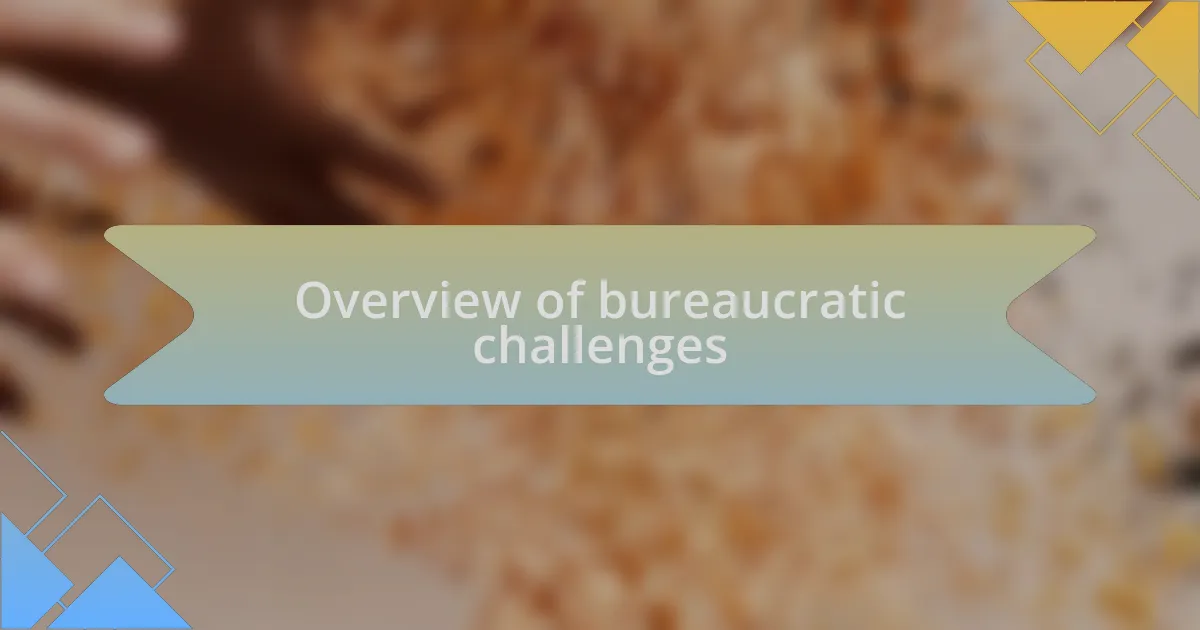
Overview of bureaucratic challenges
Bureaucratic challenges can often feel overwhelming, particularly when navigating the intricate web of regulations and requirements across different institutions. I remember a project that required alignment between multiple research bodies in Africa and Europe; it was a real eye-opener to see how varied their bureaucratic approaches were. This discrepancy not only delayed our timelines but also forced us to adapt quickly, raising questions about the flexibility of existing systems.
In many cases, these challenges stem from differing legal frameworks that govern research funding and collaborations. For instance, one institution might prioritize compliance with local laws while another focuses on international standards. Have you ever sat in a meeting, wondering if you’ll ever find common ground? Those moments can be quite challenging, as every stakeholder brings their unique set of rules and timelines to the table.
Sometimes, navigating these bureaucracies feels like walking through a maze. The layers of approval needed for simple decisions can be frustrating and time-consuming. I vividly recall awaiting permissions that seemed to stretch indefinitely—what should have been a straightforward task turned into a lengthy saga. In these situations, patience becomes a valuable asset, as does the ability to communicate effectively and manage expectations among all parties involved.
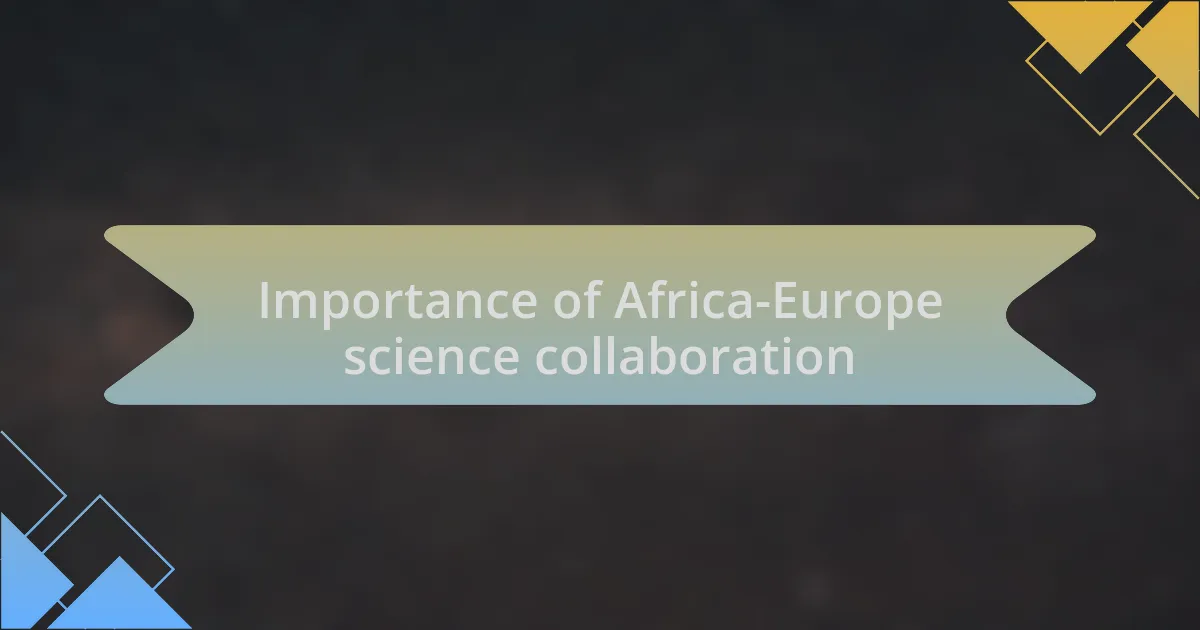
Importance of Africa-Europe science collaboration
The collaboration between Africa and Europe in science is essential for fostering sustainable development and innovation. From my experience, this partnership unlocks a wealth of knowledge and diverse perspectives that can tackle global challenges like climate change and public health. Don’t you think that merging different approaches and insights can lead to groundbreaking solutions?
Equally, such collaborations enhance capacity building within research communities. During a recent joint project, I witnessed firsthand how African researchers gained access to advanced technologies and methodologies that might have otherwise remained out of reach. These exchanges not only enrich their skillsets but also empower them to make significant contributions on both local and global stages.
Moreover, strengthening ties between Africa and Europe can lead to increased funding opportunities, which are vital for research sustainability. I remember collaborating with European partners who provided crucial resources, which helped us carry out our studies effectively. Have you ever thought about how funding can be a game-changer in advancing scientific knowledge? This synergy not only boosts research outputs but also builds long-lasting relationships between institutions, creating a robust network for future collaborations.

Key stakeholders in collaboration
When navigating bureaucratic challenges in Africa-Europe science collaboration, key stakeholders include government agencies, research institutions, and funding bodies. In my experience, having strong partnerships with government representatives can help streamline regulatory processes. I recall a project where a supportive official expedited our research permits, allowing us to focus on the science rather than getting bogged down in red tape. Isn’t it fascinating how much smoother collaboration can be with the right support?
Research institutions play a pivotal role by facilitating knowledge exchange and providing access to resources. During a collaborative workshop, I saw how representatives from both continents engaged directly, sharing insights and fostering relationships that transformed our approach to problem-solving. Have you ever considered how the cultural differences among institutions can lead to richer collaboration? These interactions not only break down barriers but also encourage innovative thinking.
Funding bodies are equally essential, as they determine the financial viability of joint projects. I remember a challenging but rewarding funding proposal process where institutions from both continents pooled their resources, leading to a comprehensive project plan. It’s challenging, but don’t you think that focusing on shared goals can inspire stakeholders to invest in collaborative efforts? The strategic alignment around common objectives often leads to significant breakthroughs that can benefit both continents dramatically.
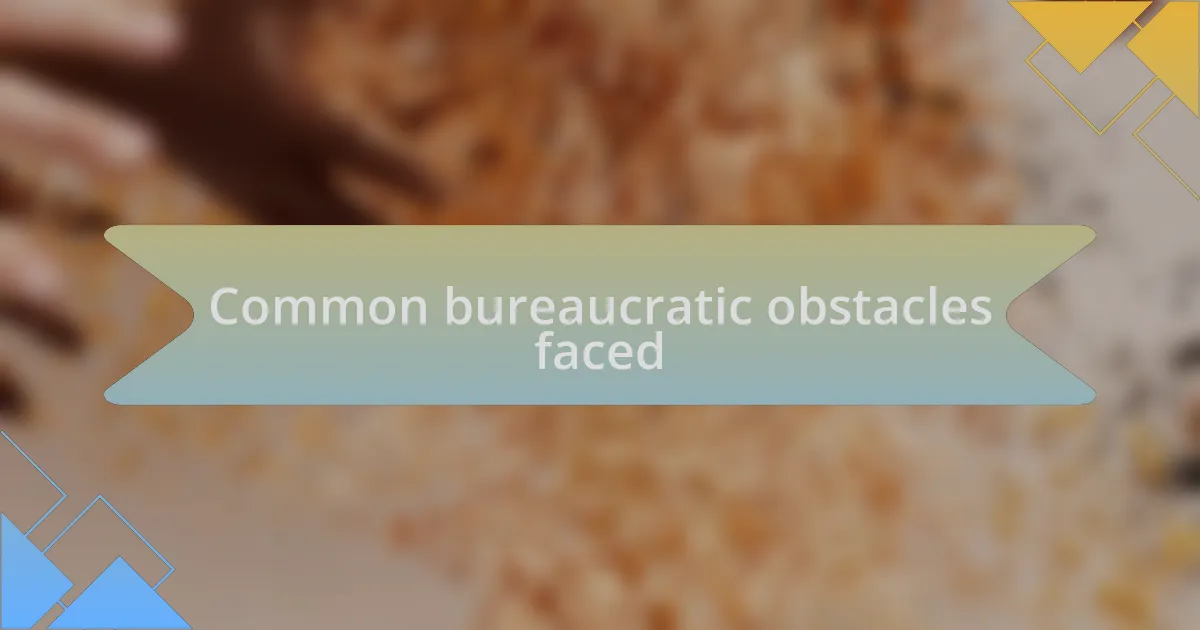
Common bureaucratic obstacles faced
When engaging in Africa-Europe science collaboration, I often encounter delays in bureaucratic processes due to differing regulatory frameworks. For instance, there was a time when our project’s timeline was thrown off because we had to navigate varying approval processes between countries. It’s incredibly frustrating to think that something as simple as a form can hold back innovative research. Have you ever felt that sense of urgency, only to be stymied by paperwork?
Another common obstacle I’ve faced is the lack of clarity in communication among stakeholders. Misunderstandings can arise when local contexts aren’t adequately explained, leading to misaligned expectations. I remember a situation where crucial pieces of information got lost in translation, which almost derailed a collaborative initiative. Doesn’t it highlight how essential effective communication is in bridging gaps in knowledge and culture?
Cultural differences also play a significant role in bureaucratic challenges. In one project, the approach to scheduling meetings differed dramatically between teams, with one side preferring strict timelines and the other being more flexible. This clash of working styles caused delays, but it also offered a valuable lesson in adapting my own practices to foster a more cohesive working environment. Have you ever tried to reconcile different approaches, realizing that flexibility can lead to smoother collaboration?

Strategies for effective navigation
Finding ways to streamline communication is crucial when navigating bureaucratic challenges. I recall a project where I implemented regular check-ins with all stakeholders to ensure everyone was aligned throughout the process. It turned out to be a game-changer; addressing small issues proactively prevented them from escalating into bigger problems. Have you considered how a simple conversation could transform your collaboration?
Establishing clear protocols can also make a significant impact on efficiency. I once developed a shared document outlining each step of our project’s approval process, which everyone could access. This simple move eliminated confusion about responsibilities and deadlines, ultimately accelerating our progress. Isn’t it interesting how clarity can cut through the noise of red tape?
Lastly, embracing flexibility when responding to bureaucratic hurdles is key. During a particularly challenging phase of a project, I learned to adapt my expectations based on the unique bureaucratic realities of each country involved. This shift in mindset allowed me to approach problems as opportunities for learning rather than sources of frustration. Have you ever found that altering your perspective can open up entirely new pathways to success?
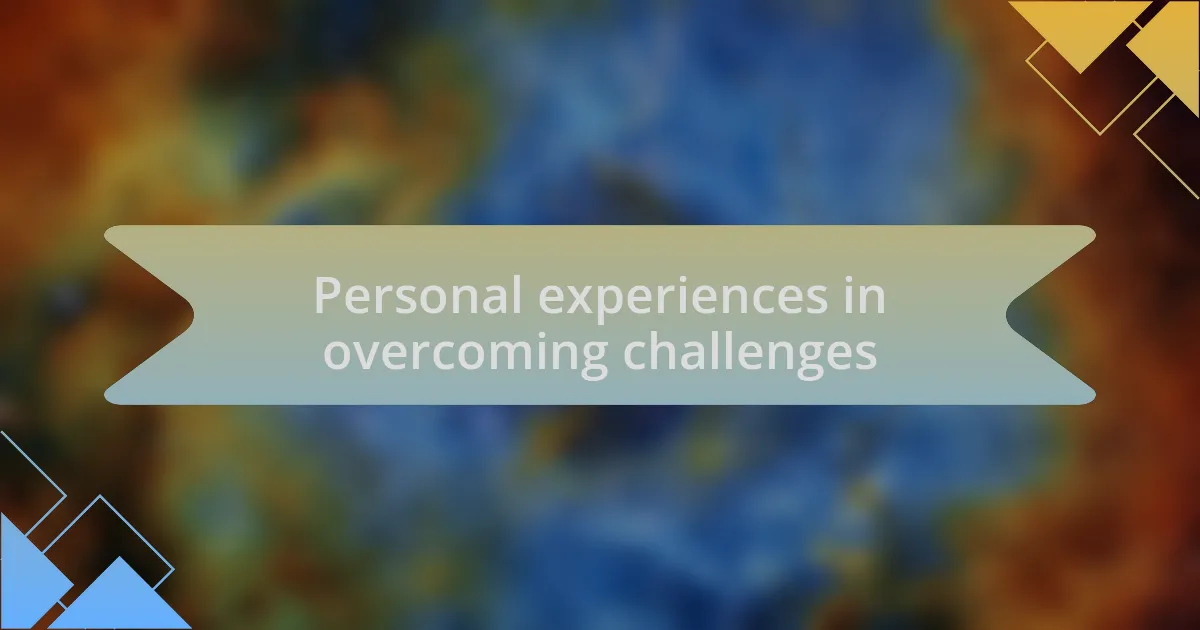
Personal experiences in overcoming challenges
Navigating the complexities of bureaucratic systems has often felt like steering through a maze. I remember a particular instance when a crucial grant application was delayed due to unforeseen administrative hurdles. My frustration was palpable, but I decided to take a step back. Instead of succumbing to stress, I reached out directly to the individuals in charge, building rapport and gaining clarity. It was surprising how a little human connection made a seemingly insurmountable barrier feel more manageable.
Once, during a collaboration between European and African researchers, we faced a significant hurdle regarding data sharing due to differing regulations. At first, it felt overwhelming. However, I took the initiative to proactively discuss our limitations with the other party. When we openly communicated our needs and constraints, we found common ground and devised a workaround that satisfied both sides. Isn’t it incredible how effective dialogue can lead to innovative solutions where once there seemed to be none?
There was also a time when a sudden funding absence threatened the entire project I had been leading. Initially, despair crept in, and I questioned whether we could move forward. But rather than giving in to that negativity, I chose to think creatively about alternative funding sources. This proactive approach not only provided a lifeline for our work but also fostered resilience within my team. Have you ever turned a setback into an opportunity? It’s moments like these that truly deepen our understanding of collaboration and determination.
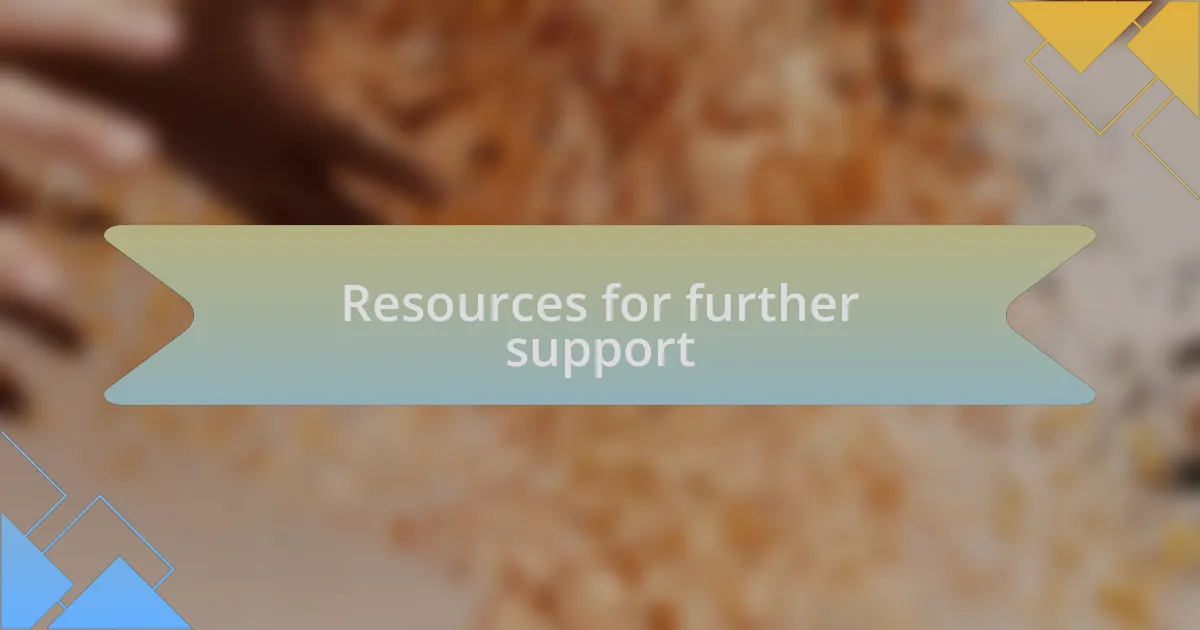
Resources for further support
When navigating bureaucratic challenges, it’s essential to have reliable resources at your fingertips. I remember a time when I stumbled upon a fantastic online platform dedicated to African and European collaborations. This resource not only provided essential guides on navigating institutional requirements but also connected me with experts who offered invaluable advice. Have you ever found a hidden gem that helped you see through a fog of confusion? Those resources can truly become your lifelines.
Getting in touch with local embassies or international organizations can also provide great support. I once reached out to the European Union Delegation in my country, and I was amazed at how willing they were to assist project leaders. They helped me understand the intricacies of compliance policies that I had previously overlooked. It’s fascinating to see how sometimes the most straightforward connections can unlock doors you didn’t even know existed.
Additionally, tapping into academic networks or online forums has given me insights I didn’t anticipate. I joined a collaborative group where members shared their experiences and strategies for overcoming bureaucratic hurdles. It was heartening to know that I wasn’t alone in this. Have you ever been surprised by the wealth of knowledge around you? Sharing challenges often leads to innovative solutions that can transform an overwhelming process into an achievable task.